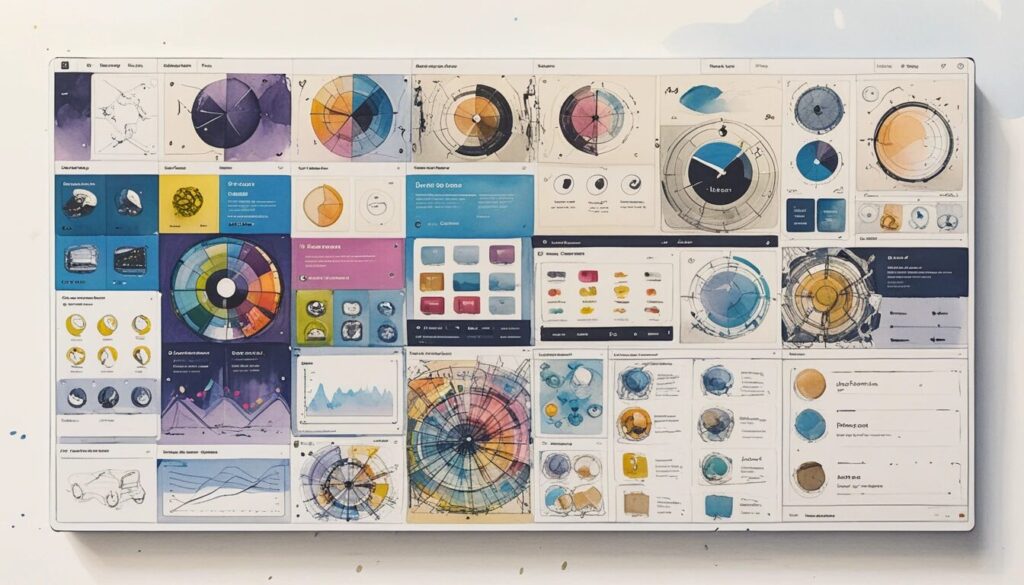Why Design Systems Thrive on Proper Implementation
- Understanding the critical role of design system adoption.
- The importance of maintaining and evolving design systems.
- How design system experts act as librarians, advisors, and collaborators.
Design systems are powerful tools that offer consistency and efficiency, but their success hinges on proper implementation. Without widespread adoption and adherence to guidelines, even the most beautifully crafted design systems can fall flat. This is why system designers must wear many hats—cataloging documentation, offering guidance, and acting as advocates for their system. By fostering proper use and adapting to real-world needs, design systems evolve into living entities that support diverse teams and products.
Take Spectrum, Adobe’s design system, as an example. Supporting over 100 applications and 600 design professionals globally, Spectrum’s success lies not only in its components but in the robust infrastructure that encourages adoption, collaboration, and continuous iteration. Let’s dive into what it takes to make a design system thrive.
Building a Strong Foundation with Documentation
- Key elements that make design system documentation effective.
- The role of websites in providing stability and scalability.
- Supplementing documentation with actionable examples and explorations.
Great design systems start with great documentation. A well-organized, accessible hub of information ensures that teams understand both the “what” and the “why” behind design decisions. Websites, rather than static files, provide the scalability and sense of permanence needed to share guidelines effectively. For example, Spectrum’s documentation covers fundamentals like history and principles, alongside practical guidance for designers and developers.
To make these guidelines more actionable, supplemental tools like key screen explorations can be invaluable. These focus on a single design challenge, showcasing tweaks and solutions that align with system principles. However, designers must avoid overstepping by creating product-specific flows on behalf of teams. Instead, their role is to inspire and guide teams in applying the system’s foundational concepts to their unique needs.
Keeping Teams Aligned Through Communication
- Why consistent updates are vital for design systems.
- Strategic use of communication tools like Slack.
- Testing updates through small groups and in-progress feedback.
Design systems are living entities, constantly evolving to meet new challenges. Clear, consistent communication ensures that teams stay aligned with the latest updates. Platforms like Slack can serve as both an announcement hub and a space to gather real-world examples of system usage. These examples can later inform broader updates, ensuring scalability and relevance.
With Spectrum, updates are shared with small groups early on, allowing for feedback and refinement before a wide rollout. This collaborative approach not only improves the quality of updates but also builds trust and buy-in from the teams using the system. By vetting ideas across diverse product needs, system designers can ensure that their solutions work in a variety of contexts.
Creating Infrastructure for Feedback and Collaboration
- Why feedback loops are essential for design system evolution.
- Balancing personal support, Slack discussions, and feedback forms.
- Encouraging shared ownership of the design system.
No design system can succeed without robust support mechanisms. From one-on-one office hours to structured feedback forms, providing multiple channels for questions and requests ensures that teams feel supported. For example, Slack is ideal for quick, targeted queries, while feedback forms capture detailed bug reports and feature requests efficiently.
System designers must also act as connectors, sharing insights and examples from one team to another. This fosters alignment across products and builds a sense of shared ownership. By understanding the “why” behind requests—whether for a new component or a customization—designers can offer thoughtful, scalable solutions that align with system principles.
Establishing Clear Guidelines for Updates and Requests
- Defining what types of updates a design system will support.
- Handling requests that don’t align with system principles.
- Providing transparent rationale and alternative solutions.
Not every request can or should be fulfilled by a design system. To maintain coherence and scalability, system designers must establish clear guidelines for what will be added, such as bug fixes or widely needed component improvements. For requests that fall outside of these parameters, offering transparent rationale and viable alternatives is key.
For example, Spectrum team members recently fielded a request for a donut chart component. Upon further discussion, they realized the team’s needs could be met with an existing linear meter. By digging into the “why” rather than just the “what,” designers can uncover root needs and offer solutions that fit the broader system ecosystem.
Conclusion
Design systems are more than just collections of components—they are frameworks for collaboration, consistency, and creativity. To ensure their success, system designers must master the art of documentation, communication, and support. By building strong foundations, keeping teams aligned, and fostering shared ownership, design systems can evolve to meet the complex needs of their users.
Whether you’re working on a small-scale system or one as expansive as Spectrum, the principles remain the same. Be transparent, stay open to feedback, and always keep the end goal in mind: empowering teams to create cohesive, user-centric designs. Ready to take your design system to the next level? Start by re-evaluating your documentation and communication strategies, and make collaboration the heart of your process!
